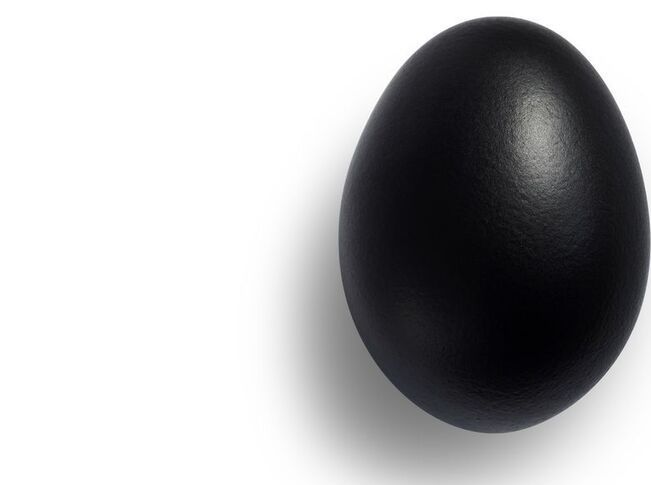Nov 26, 2020
YouTube is testing AI-generated video chapters
Posted by Genevieve Klien in category: robotics/AI
The feature could save YouTube creators from having to manually add chapters to the descriptions of their videos.

The feature could save YouTube creators from having to manually add chapters to the descriptions of their videos.
An Israeli study came out last week that has been described as rejuvenation via hyperbaric oxygen. I’m not taking it very seriously, and I owe you an explanation why.

Hell, our own evolution on Earth was pure luck.
In newly published research from Oxford University’s Future of Humanity Institute, scientists study the likelihood of key times for evolution of life on Earth and conclude that it would be virtually impossible for that life to evolve the same way somewhere else.
Continue reading “Intelligent Life Really Can’t Exist Anywhere Else” »
Researchers used a scanning tunneling microscope to visualize quantum dots in bilayer graphene, an important step toward quantum information technologies.
Trapping and controlling electrons in bilayer graphene quantum dots yields a promising platform for quantum information technologies. Researchers at UC Santa Cruz have now achieved the first direct visualization of quantum dots in bilayer graphene, revealing the shape of the quantum wave function of the trapped electrons.
The results, published on November 23, 2020, in Nano Letters, provide important fundamental knowledge needed to develop quantum information technologies based on bilayer graphene quantum dots.
Analysis of an ancient meteorite from Mars suggests that the mineral zircon may be abundant on the surface of the red planet.
By determining the age and hafnium isotope composition of zircons, researchers from the University of Copenhagen have shown that a population of these crystals were sourced from the deep interior of Mars. If the researchers are correct, it means that the young zircons contain information about the deep, inaccessible interior of Mars, which provides insights into the internal structure of the planet.
“Zircon are incredibly durable crystals that can be dated and preserve information that tell us about their origins. Having access to so many zircons is like opening a time window into the geologic history of the planet.” —
SpaceX’s satellite internet broadband service is expanding by leaps and bounds — and leaping across borders.
Neutrinos Yield First Experimental Evidence of Catalyzed Fusion Dominant in Many Stars
An international team of about 100 scientists of the Borexino Collaboration, including particle physicist Andrea Pocar at the University of Massachusetts Amherst, report in Nature this week detection of neutrinos from the sun, directly revealing for the first time that the carbon-nitrogen-oxygen (CNO) fusion-cycle is at work in our sun.
The CNO cycle is the dominant energy source powering stars heavier than the sun, but it had so far never been directly detected in any star, Pocar explains.

NASA’s intrepid Juno spacecraft has been probing and documenting the Jovian system since it first arrived back in July of 2016, after a five-year journey from Earth. While we’ve all seen many of the remarkable photos its instruments and cameras have recorded as it circles the planet, it’s still far removed from the sheer immensity witnessed firsthand by the probe.
To offer up a front row seat aboard Juno, a new five-minute flyby video, comprised of 41 separate images recorded by the craft, delivers a small glimpse of what we’d observe if we were a stowaway passenger as it passed over the gas giant at a range of approximately 2,100 miles above the cloudtops.
According to new research from CCR scientists, embryonic stem cells have a unique way of protecting their telomeres, the structures at the ends of chromosomes that shorten with every cell division. A research team led by Eros Lazzerini Denchi, Ph.D., an NIH Stadtman investigator in CCR’s Laboratory of Genomic Integrity, has found that rather than treating exposed telomeres as damaged DNA as most cells do, embryonic stem cells call on genes typically used only during the earliest stage of development to stave off unwanted DNA repair. The team’s findings, which come from studies of mouse embryonic stem cells, are reported November 25, 2020, in Nature.
By revealing an unexpected way cells can protect their telomeres, the new findings may help explain a survival strategy employed by some cancer cells, which must find a way to circumvent growth limits imposed by the natural shortening of telomeres that occurs as we age.
Embryonic stem cells, which arise early in an embryo’s development, have a unique capacity to become virtually any of the body’s specialized cell types. Lazzerini Denchi and colleagues first discovered their unusual approach to protecting telomeres when they found that the cells can survive without a protein called TRF2, which binds to and protects chromosome tips. The protein is absolutely essential for hundreds of different types of cells. Without it, exposed chromosome tips trigger faulty activation of DNA damage repair pathways, which stitch the unprotected ends together. Chromosomes fuse together and cells lose the ability to divide. But when Lazzerini Denchi’s team removed TRF2 from embryonic stem cells, chromosomes maintained their integrity and the cells continued to proliferate.
